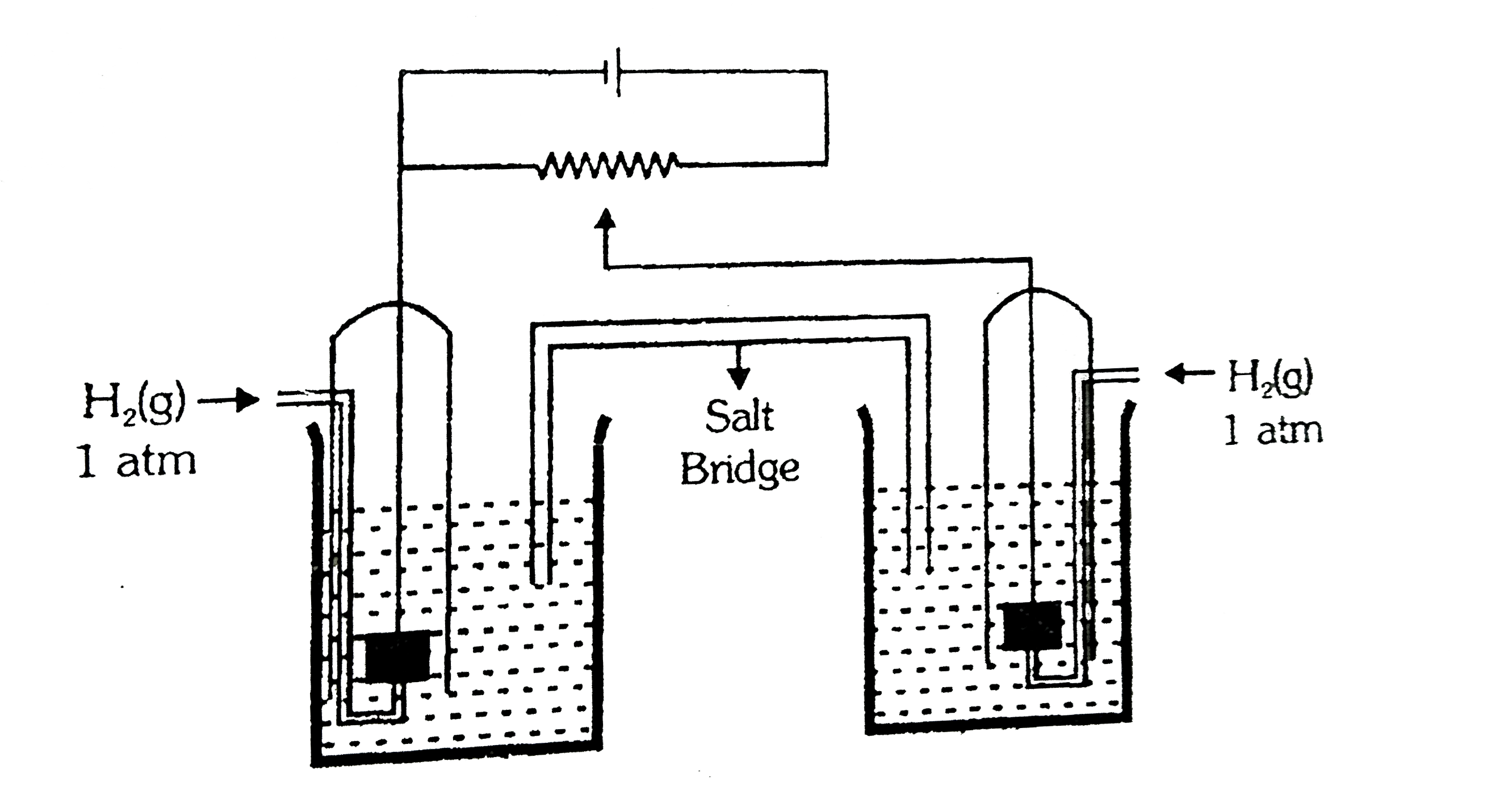What is [H+] in mol/L of a solution that is 0.20M in CH3COONa and 0.1M in CH3COOH? Ka for CH3COOH is 1.8×10−5?
3.5×10−4
1.1×10−5
1.8×10−5
9.0×10−6
The correct Answer is:D
To find the concentration of hydrogen ions (H+) in a solution that is 0.20M in CH3COONa (sodium acetate) and 0.10M in CH3COOH (acetic acid), we can use the concept of the common ion effect and the dissociation constant Ka for acetic acid.
1. Identify the Components:
- Sodium acetate (CH3COONa) dissociates completely in solution to give CH3COO− (acetate ion) and Na+ (sodium ion).
- Acetic acid (CH3COOH) is a weak acid that partially dissociates to give H+ (hydrogen ion) and CH3COO−.
2. Write the Equilibrium Expression:
The equilibrium expression for the dissociation of acetic acid is given by:
Ka=(CH3COO−)(H+)(CH3COOH)
where Ka for acetic acid is given as 1.8×10−5.
3. Determine the Concentrations:
- The concentration of acetate ion (CH3COO−) from sodium acetate is 0.20M.
- The concentration of acetic acid (CH3COOH) is 0.10M.
- Let (H+) be the concentration of hydrogen ions we want to find.
4. Substituting Values into the Equilibrium Expression:
Substitute the known values into the Ka expression:
1.8×10−5=(0.20)((H+))0.10
5. Solve for (H+):
Rearranging the equation gives:
(H+)=(1.8×10−5)×0.100.20
Simplifying this:
(H+)=1.8×10−60.20=9.0×10−6M
6. Final Answer:
The concentration of hydrogen ions (H+) in the solution is:
(H+)=9.0×10−6M
- Sodium acetate (CH3COONa) dissociates completely in solution to give CH3COO− (acetate ion) and Na+ (sodium ion).
- Acetic acid (CH3COOH) is a weak acid that partially dissociates to give H+ (hydrogen ion) and CH3COO−.
The equilibrium expression for the dissociation of acetic acid is given by:
Ka=(CH3COO−)(H+)(CH3COOH)
where Ka for acetic acid is given as 1.8×10−5.
- The concentration of acetate ion (CH3COO−) from sodium acetate is 0.20M.
- The concentration of acetic acid (CH3COOH) is 0.10M.
- Let (H+) be the concentration of hydrogen ions we want to find.
Substitute the known values into the Ka expression:
1.8×10−5=(0.20)((H+))0.10
Rearranging the equation gives:
(H+)=(1.8×10−5)×0.100.20
Simplifying this:
(H+)=1.8×10−60.20=9.0×10−6M
The concentration of hydrogen ions (H+) in the solution is:
(H+)=9.0×10−6M
Similar Questions
Knowledge Check
What is [H+] in mol /L of a solution that is 0.20 M in CH3COONaand0.10 M in CH3COOH?(Ka=1.8×10−5)
3.5×10−4
1.1×10−5
1.8×10−5
9.0×10−6A3.5×10−4B1.1×10−5C1.8×10−5D9.0×10−6
What is the approximate OH− ion concentration of a 0.150MNH3 solution? (Kb=1.75×10−5)
View SolutionWhat is the concentration of CH3COOH(aq.) in a solution prepared by dissolving 0.01 mole of NH+4CH3COO− in 1 L H2O? [Ka(CH3COOH))=1.8×10−5),Kb(NH4OH)=1.8×10−5)]
View SolutionCarefully observe the given figure and using data provided find the EMF of shown Galvenic cell in volt:

Solution A is 0.1M each in NH4OH and NH4CI and solution B is 0.1M each in CH3COOH and CH3COONa+.
[Given: Ka(CH3COOH)=10−5,Kb(NH4OH)=10−5 and 2.303RTF=0.06 volt]
View SolutionA solution is 0.1M in CH3COOH and 0.1M in CH3COONa.Whichof the following will change its pH significantly?
View SolutionCalculate the percent hydrolysis of acetic acid in a solution 2.3 M in CH3COOH and 0. 1 in HCl . Ka=1.8×10−5
View SolutionThe pH of solution, containing 0.1N HCl and 0.1N CH3COOH(Ka=2×10−5) is
View SolutionThe pH of a solution containing 0.1mol of CH3COOH,0.2mol of CH3COONa,and 0.05mol of NaOH in 1L.(pKaofCH3COOH=4.74) is:
View Solution
